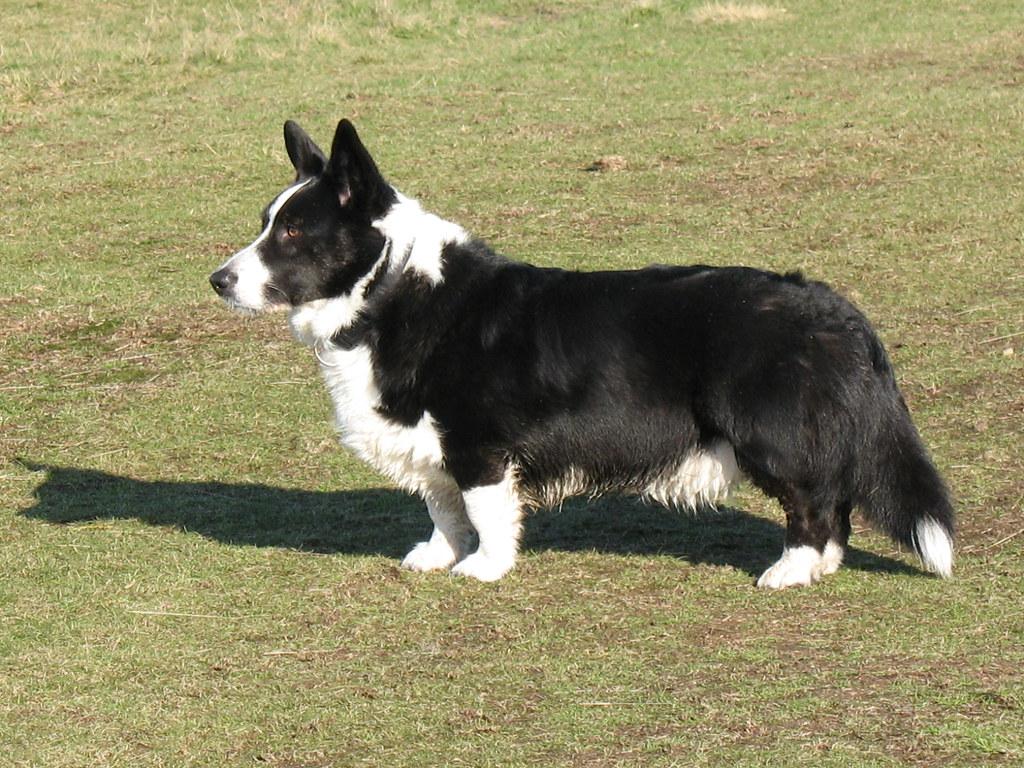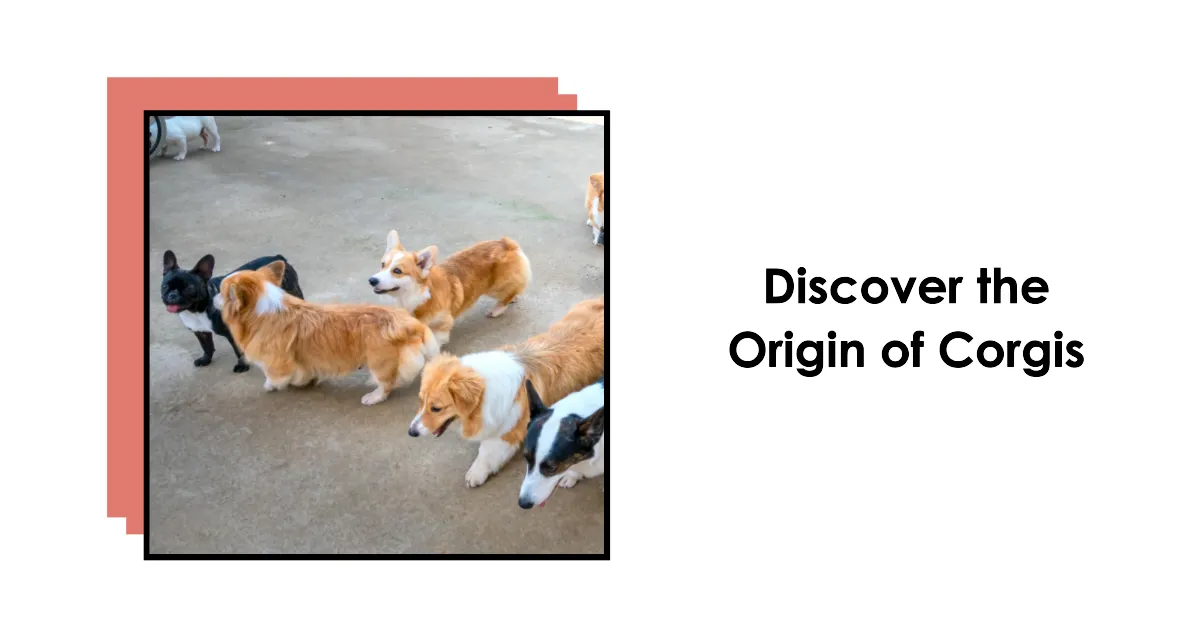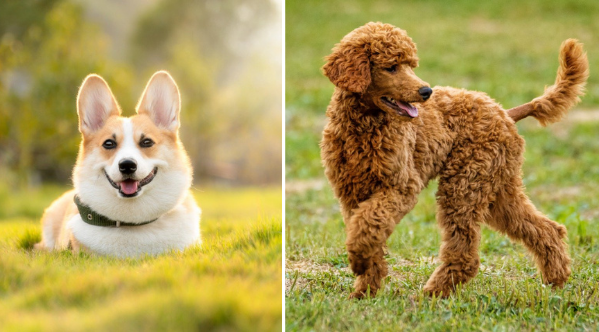Are Corgis Born Without Tails?

Many people have often wondered, are corgis born without tails? Is this how it is supposed to be? And if yes, then why do some Corgis appear with tails?
So, what exactly happens to their tails? Are some of them born without tails? Do some of them grow them after birth? Well, so many questions are popping in your head already. Let’s take one question at a time and answer everything in detail so that you can clear all the doubts around Corgis. First, let’s read about Corgis: History, origin, appearance, and characteristics.
History and origin
Corgis were considered one breed, but then AKC identified two Corgi breeds: Pembroke Welsh Corgi and Cardigan Welsh Corgi. Cardigan Welsh Corgi is the older one, and Pembroke is known as its cousin, though both are not related in any manner. Known as the oldest herding breeds, Cardigans Welsh Corgis were brought to Wales from Central Europe many centuries ago, whereas Pembroke Welsh Corgi came to Wales by Flemish weavers in the early 1100s. The Pembroke Welsh is more popular because of Queen Elizabeth II of England. She loves Corgis and has even owned over 30 corgis of this breed during her role as the Queen.
Here is an interesting article for you if you want to know more about Queen’s Corgis https://www.washingtonpost.com/world/2021/03/10/queen-elizabeth-royal-corgis/.
Behavioral traits

Corgis are very friendly, easy-going, and loving dogs. They bark a lot and can be weird around strangers or animals, but they would learn with the correct socialization and training. They are very energetic, so you need to engage them in some physical or mental activities all the time. They are quick learners and are great at watching your house and your safety.
Physical attributes
Corgis are short-legged and large body dogs. However, Cardigans are more oversized and have a heavier bone structure out of the two. Pembrokes have an oval bone structure and a squared-off rear end, making them look linear and rectangular. Corgis have a double coat in different colors. Pembroke Corgis have smaller pointed ears, and Cardigans have round ears.

Now, let’s see how the tail part is different in both of them. Pembroke has a docked tail; however, the Cardigan’s tail is longer and fox-like. So, it is not like they are born without tails; they are docked after their birth for some reasons mentioned by AKC.
To begin with, let us first understand what docking is? And why is it done?
Tail docking is a process in which a part of the dog’s tail is cut, or sometimes it can be an entire tail too. The procedure is done without anesthetic drugs because it is said that a dog cannot feel any pain until he is six days old.
It is a practice that started in the Roman era. Then, people believed that by cutting a dog’s tail, they are preventing rabies. After some time, people also started saying that docking also helps in saving a dog from specific medical injuries. More so, the dogs that used to work with humans had a possibility of catching an injury or infection with their long tails loitering on the ground. However, now that the percentage of such work for dogs has decreased, why is docking still practiced?
Reasons for docking in Corgis
As inhumane as tail docking sounds, American Kennel Club gives some reasons for this practice.
Appearance
As the AKC (American Kennel Club) fully supports the docking practice in Corgis, it does not even register a Pembroke Welsh Corgi with a tail. And, the only reason you need an AKC-approved Corgi is to open the possibilities to enroll him in some fancy dog show. But, on the other hand, for Cardigans, AKC allows the tail. Are you wondering if it is possible for Pembroke corgis not to have a tail naturally? Yes, it is possible. Some breeds have been observed in Pembrokes who do not have tails by birth.
Falling under the category of small breed, Corgis have a short tail. While cardigans have their natural tails intact, Pembrokes can even have curly tails of around 4-5 inches. In the guidelines of mentioning Corgi tail standards, the AKC notes that only 2 inches of the corgis’ tail should be docked.
You can find AKC guidelines here:
https://images.akc.org/pdf/breeds/standards/PembrokeWelshCorgi.pdf.
Here was all the information about tail docking you needed to know. Let us also have a look at the reasons why a dog needs to have a tail. If tails were a part of their body, that would have some logical explanation, too, right?
Social Cues

Tails are not just a body part for dogs that humans can alter as per their requirements. In dogs, the tail plays an imperative role in communication. Have you seen your dog waging the tail and thought how cute he looks? Well, that wagging has a lot of reasons. It can be because they are happy, excited, scared, nervous, or even angry.
Have you ever wondered how you would look without a body part? That would be awkward for you to walk in a crowded street, right? That is how it is with dogs too. They feel uncomfortable and under confident if there is no tail. They won’t communicate with their tribe, and they might turn out to be very aggressive.
While the practice is still regular, according to AKC in the United States, European Union has banned tail docking completely. Read why tail docking is an invalid concept in today’s time: https://corgiadoption.com/corgi-tail-docking.
That was all you needed to know about Corgi and their tails; make a wise choice.











